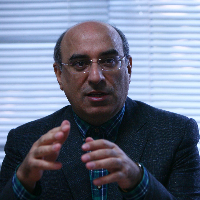Assessment of Energy Efficiency on a Neighborhood Scale Using the LEED Model for Sustainable Development (Case study: Velenjak neighborhood of Tehran city)
One of the most important views of contemporary urban planning is sustainable urban development, which has been developed since the Brunt land Committee report and is now widely seen as an integral part of the social, economic, and environmental scopes. According to this definition, sustainability debate in the field of energy is also considered as one of the requirements of urban life It is necessary to pay attention to energy sustainability in cities due to the high volume of energy consumption in them. In recent years, attention has been given to issues related to climate and urban energy. Therefore, this trend reflects the recognition of the need to address energy issues in cities. Moreover, one of the important and influential dimensions in urban planning is the use of urban land use. Urban land use planning enhances the urban system and directs its development by determining the use of urban land, determining the density and providing appropriate access to types of utilities. Therefore, planning to create cities that are energy efficient is one of the most important goals of urban planning and urban land use planning. Regarding these issues, addressing energy-saving policies in land use planning has been on the agenda of developed countries for many years and different policies, programs and laws have been prepared. Based on the country's requirements regarding energy consumption, the need to analyze and evaluate the use of urban land based on the energy efficiency approach in the process of urban land use planning is essential and of great importance.
Energy sustainability means supplying energy to meet the needs of the present generation without compromise of the ability of future generations to meet their needs. The main strategies for achieving energy sustainability in communities are reducing fossil fuel use, implementing energy consumption control methods and reducing energy demand which is achieved through using renewable energy sources and applying energy efficiency practices. Energy efficiency is the optimal and efficient use of energy that aims to reduce the growth of energy demand, reduce the consumption of fossil fuels, as well as increase the supply of renewable energy. In other words, energy efficiency is the supply of the same levels of energy services by applying small amounts of energy. Energy efficiency includes some benefits for government and users such as economic growth, CO2 reduction, sustainable energy systems and … which shows its importance in urban planning. Energy efficiency is a key for countries to change their development path into zero CO2 economy growth. There are some factors that affect energy efficiency in cities including: urban form, buildings, urban spatial structure and urban land use.
This is an applied research. The method is descriptive-analytic. The purpose of this study is to evaluate the land use of the Velenjak neighborhood of Tehran based on the energy efficiency of sustainable development. After evaluating different models and methods in this regard, the LEED model was selected to evaluate the energy efficiency of the study area. The data for the LEED model index were calculated quantitatively and qualitatively by observing the weight given to each indicator. The method for collecting data in this research is based on library studies and field surveys. The data were summarized through available statistics and information such as censuses, per capita energy, detailed plans of the region etc., obtained from documentary projects and other information sources.
Taking into account the current status of Velenjak neighborhood, among the mentioned indicators of LEED, the following criteria were selected for application in the study area: Situation and smart communication Criterion (4 indices), Neighborhood Unit Pattern and its design (6 indices) and green construction and technology (4 indicators). Then, the selected indicators were scored, so that first the purpose of the indicators is expressed and expressed according to the purpose of the index, the needs and the manner of ranking the index, and then analyzing each of the indices in the neighborhood is dealt with and The amount of earned scores is calculated for each indicator for the neighborhood. The results indicated studied area condition is moderate (not good, not bad). In addition, according to the LEED model the efficiency of the area could be increased by changing some elements of the area.
The present study showed that to achieve energy efficiency at the neighborhood level, measures should be taken such as promoting mixed land use, increasing density and compactness, hierarchical distribution of services, developing transit-oriented networks, creating integrated and interconnected networks, and changing energy consumption patterns. For this purpose, in order to evaluate energy efficiency at the neighborhood level, the energy efficiency of the Velenjak neighborhood of Tehran was studied. Neighborhood assessment based on the LEED model showed that the area is in a relatively moderate (not good, not bad) situation, which with applying some changes can increase energy efficiency in the neighborhood. Based on the results of the research, neighborhood-level suggestions were given according to the model, which indicated that energy efficiency could be increased by different policies and programs. In general, urban energy efficiency is important because not only we have a global shortage of energy, but also addressing this issue will improve the quality of life in most cities. Thus, energy-related measures appear to be necessary to reduce energy consumption and achieve energy efficiency.
- حق عضویت دریافتی صرف حمایت از نشریات عضو و نگهداری، تکمیل و توسعه مگیران میشود.
- پرداخت حق اشتراک و دانلود مقالات اجازه بازنشر آن در سایر رسانههای چاپی و دیجیتال را به کاربر نمیدهد.



